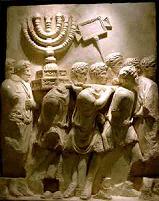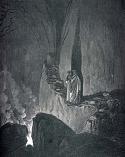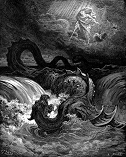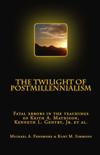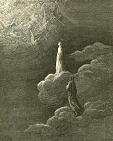Review of Israel Warren's 1879 Parousia
Kurt Simmons
A Critical Study of the Scripture Doctrines of Christ’s Second Coming; His Reign as King; the Resurrection of the Dead; and General Judgment.
In this article, we review Israel P. Warren’s, A.D. 1879, Parousia.
Among the earliest full Preterist books, Warren’s Parousia was
digitalized and made available online by Google, and brought to
light by Scott Thompson (Dallas, TX). Although it shares the same
title as J. Stuart Russell’s Parousia, it was independently written
and published by the author; it shows no sign that Warren was aware
of Russell’s work by the same title. In fact, use of the same title
by the author is good evidence that he knew nothing of Russell’s
book, for this would have been the most blatant form of plagiarism
and discredited Warren’s work. Russell published his work
anonymously in England in 1869 – and later republished with his name
appended in 1879 - almost simultaneously on this side of the
Atlantic, while Russell was published his in England.
Although not as exhaustive in its treatment as Russell’s 600 page
work, which addressed every passage in the New Testament touching on
the second coming, Warren deals competently with the subject matter,
and make an able case for Christ’s first century eschatological
return.
Protracted Eschatological Parousia
Central to Warren’s interpretation and case is his view of the term “parousia” as presence, rather than “coming.” Although Warren agrees that coming is implied in the term as sometimes required by the context, he argues that presence conveys a more accurate understanding of the eschatological events associated with the term.
From this view of the word it is evident, I think, that neither the English word “coming” nor the Latin “advent” is the best representative of the original. They do not conform to its etymology; they do not conform to the idea of the verb from which it is derived; nor could they appropriately be substituted for the more exact word, “presence,” in the cases where the translators used the latter. Nor is the radical idea of them the same. “Coming and “advent” give most prominently the conception of an approach to us, motion toward us; “parousia” that of being with us, without reference to how it began. The force of the former ends with its arrival; that of the latter begins with it. Those are words of motion, this of rest. The space of time covered by the action of the former is limited, it may be momentary; that of the latter, unlimited, - continuance that may be eternal. So in respect of place; a coming implies an arrival at some locality; a presence may be universal, “wherever two or three are met.” The promise of the Lord’s coming to men, therefore, is not the same thing as a promise of his presence with them. The one implies nothing more, necessarily, than a single manifestation, a visit however short; the other implies a stay with them, relations of permanence; not the performance of a single act, but rather a dispensation including within it many acts, and covering a long period of duration, possibly eternal. Parousia, pp. 14, 15
For Warren, the nature of the Parousia is comprehended in Christ’s office as King and Judge, and giver of life to the dead. Warren does not see this as a single eschatological event, but a continuing series of acts stretching over all time. The Parousia is
The presence of Christ in the world in the exercise of his mediatorial office. In this view, it is the complement and contrast of his first advent, when he came in the flesh. It is for the for the completion of the work which he then began. It is for the harvesting of the seed then sown. Matt. 13:37-43. The former, according to the nature of its work, was temporary; this is to be permanent. That was associated with memories of sorrow, humiliation, and death; this with the promise of perpetuity, and glory, and blessedness. The one was a day of visitation to men (Luke 19:44); the other an abode with them. What better term for such an abode could be devised than one which includes all the ideas of grace and joy involved in the exercise of his great offices, the Parousia, - a blessed and eternal presence with them? Parousia, pp. 20, 21
Warren urges that while there are potentially many comings (manifestations) of Christ, there was only the one Parousia:
It follows from this that while we are permitted to conceive and to speak of but one Parousia of Christ, there may be many comings. These are to be regarded as specific events under a generic dispensation. Several are so designated in the scriptures, and many more might equally well be. Among them were the Spirit’s work on the day of Pentecost, the judgment upon Ananias and Sapphira, the conversion of Saul, the various deliverances of the apostles from prison, the overthrow of Jerusalem, the destruction of the man of sin, the conversion of Constantine, etc., and generally the happy death of believers, the conquests in the work of missions, revivals, etc. Parousia, p. 24
Any one familiar with the work of John Noe will recognize an affinity in thought here, both in John’s work arguing for many comings of Christ and his work, which argues that there is a sense in which Christ “never left.” However, Noe’s view may be distinguished in several important particulars: John is clear that there was only one eschatological coming of Christ and that it culminated historically in the events marking the destruction of Jerusalem. Warren, on the other hand, does not confine the Parousia to the first century. On the contrary, Warren views the Parousia as of prolonged and indefinite duration, reaching even to our day, is probably the most unique aspect of his approach. “This protracted duration of the Parousia is a fact of so much importance, that it deserves particular consideration.” (Parousia, p. 73) Warren does not view the second coming as an event in history, but an epoch stretching over vast ages. “The grand programme of the world’s history under the administration of our Lord, with its mighty procession of centuries and ages, refuses to be thus narrowed down to a single point.” (Parousia, p. 78) The Parousia is not something pertaining to a point, but to a vast space of time. It is not an event, but a dispensation.” (Parousia, p. 79) According to Warren, the Parousia encompasses the whole of the resurrection and judgment, not just the general resurrection of souls from Hades at the last day, but endures as long as there are men to be judged and dead to be raised.
But this, at least, is certain that it is to embrace the whole family of mankind; that there never has been and never will be one to whom it is not appointed to “stand before the judgment seat of Christ to receive the things done in his body, according to what he hath done, whether it be good or bad. Parousia, p. 77.
Binding of Satan
Warren views the binding of Satan in reference to the cessation of
persecution.
It is not Satan in his general character, so to speak, as the prince of all evil, that is the subject of the prophetic narrative; it is solely in his capacity as persecutor. For this alone is he introduced upon the scene; it is to symbolize the quality of a persecutor that the hideous characters of his person are portrayed, and it is this work which throughout the sketch he is represented as doing by means of his agents, the Beast and False Prophet. Consistency, therefore, requires that the confinement he now suffers should be taken in the same special and restricted sense. Parousia, p. 128.
Although Warren correctly identifies the significance of the binding of Satan, his view of the Parousia as a dispensation reaching into modern times, causes him to apply Revelation’s imagery to events beyond the first century. For Warren, the binding of the dragon began at the triumph of Christianity by the conversion of Constantine and the cessation of persecution by the Roman Empire.
The binding of Satan, then, I cannot doubt, denotes the cessation of pagan persecution against the church. And if that view be correct, it is not difficult to assign an approximate date to which it is to be referred. In the year A.D. 324, Constantine the Great, by the defeat of Licinius, the emperor of the east, became the sole monarch of the Roman Empire…Constantine, now attaining the sole imperial dignity, issued a new proclamation reaffirming the edict of toleration, and exhorting all his subjects to “imitate without delay the example of their sovereign and embrace the divine truth of Christianity.” Parousia, p. 132.
Gog and Magog
But if the thousand year binding of Satan is the cessation of
persecution by the conversion of Constantine, what is the losing of
Satan in the battle of God and Magog? Warren answers: the
persecution of the Mohammedanism.
The thousand years are over and Satan is loosed again. In the
distant regions of the earth, - the land of Gog and Magog, - are
mighty nations with a population innumerable “as the sand of the
sea.” These he stirs up against the saints. They leave their
barbarous homes, and invade the Christian territory, surround its
capital, and beloved city, – Jerusalem, - but are destroyed by the
lightnings of heaven. What is this but a graphic description of the
rise, conquests, and ultimate overthrow of the OTTOMAN EMPIRE, in
which the great monarchy of Mohammedanism, the rival religion to
Christianity, enthroned itself and undertook the conquest of the
world?
“From the conquest of Prusa,” says Gibbon, “we may date the true era of the Ottoman Empire.” This was in the year 1326, one thousand and two years from the promulgation of the imperial edict of Constantine. Parousia, p. 137, 139.
At this point, Warren’s idea that the Parousia was a permanent presence reaching until our own day loses its ability to persuade us, and he becomes just one more in the long line of those that stumble over the imagery of the millennia, propelling them headlong into a form of “continuous-historical” method that removes Revelation from its first century context. If Gog and Magog is Islam, the prophecy has not been fulfilled, and we are not dealing with a contemporary-historical (Preterist) analysis of scripture.
Upon the destruction of this third great persecuting power, it is predicted that “the devil that deceived these nations shall be cast into a lake of fire and brimstone, where the Beast and False Prophet are”…that we are drawing near to that period seems very probable. The persecuting empire of Mohommet is already in its dotage, and any serious attempts to renew its ancient assaults on Christianity would infallibly lead to its prompt extinction as by “a fire from God out of heaven.” Parousia, p. 143
The First Resurrection
According to Warren, the first resurrection is one of quality in
rank and order, not in time, and speaks to a unique honor bestowed
upon those who suffered martyrdom for Christ, by their reigning with
him in heaven. This belongs only to martyrs; other saints are
excluded from this reign; it is their special heritage as martyrs of
Jesus. Warren believes that this special heritage is reflected in
the Greek, which for other saints is merely a resurrection of the
dead, but for the martyrs a resurrection out of the dead, signifying
their special elevation above their brethren on account of being
martyred. “It implies that out of the whole number of the departed
there shall be who that attain a peculiar honor, one which they do
not share with the rest.” (Parousia, p. 151) The thousand years is
not symbolic, but actual, measured by the period commencing with the
accession of Constantine until the overthrow of the Ottoman Empire
by Islam. However, although the binding of the persecutor terminates
after a thousand years (actually, 1,002 years by Warren’s
calculation) when Islam is allowed to persecute Christians, the
martyrs continue to reign. Thus, the one ends, but the other does
not.
This is perfectly ridiculous. The saints reign, not in heaven, but
in Hades paradise; the resurrection of the dead does not occur until
the last enemy is destroyed at the “last day” (Cites ), depicted
toward the latter part of the chapter (Rev. 20:11-15)[1]; the idea
that there was a special resurrection of martyrs is taught nowhere
else in scripture, nor is it taught here. Moreover, Warren’s whole
scheme is internally inconsistent; the saints most certainly do not
reign while the dragon is bound, for the simple fact that that they
cannot suffer martyrdom until he is loosed. It is only when the
dragon is loosed that the saints suffer martyrdom and thus attain to
the first resurrection of the soul in paradise. Further, the battle
of Gog and Magog is the same battle depicted elsewhere in
Revelation. This is nowhere more apparent than in chapter nineteen,
which makes specific allusion to Gog and Magog by quoting the
prophet Ezekiel’s description of that event. (Rev. 19:17) The
battle of Gog and Magog, also known as the battle of Armageddon, is
nothing but a symbolic depiction of the persecution under Nero; the
battle begins in chapter thirteen, where it is given to the beast
(the persecuting power of Rome) to make war against the saints, and
concludes in chapter nineteen, where the beast and false prophet
(the persecuting power of the Jews) are slain. (Rev. 19:20, 21)
Hence, the martyrs of Rev. 20 who die for refusing to worship the
beast are plainly seen to have been slain only after the dragon is
loosed, and not before, for it is not until he is loosed that this
battle occurs. (Rev. 20:7-11) Chapter twenty is a recapitulation; it
retraces ground previously covered, bringing us again to the time
when the dragon that had persecuted the church under Caiaphas,
Pilate, and Paul in chapter twelve, was loosed from the bottomless
pit to persecute the church again under Nero. (Rev. 11:7; 17:10)
The Consummation
According to Warren, the continuing Parousia of Christ will result
in a grand consummation, similar to the golden age of Pre- and Post
– millennialists. Warren says “it is expressly declared that neither
the senses nor imagination of man are adequate to conceive of the
glorious reality” of the consummation yet to come. (Parousia, p.
159) Warren rejects the Premillennial model of a millennium suddenly
accruing upon the coming of Christ, and opts instead for the
gradualism of Postmillennialism in which the kingdom advances slowly
until it overtakes and consumes all, ridding mankind forever of the
works of the devil and very sin itself. (“I will not presume to
imagine what this world will become when sin is destroyed, and when
all its inhabitants and forces become holy to the Lord.” Parousia,
p. 174) According to Warren, Christianity will become universal; it
will become the sole religion; it will be greatly intensified in
power; and thus pervade all the forces that mold human character and
affect the condition of the world:
The earth itself is to be regenerated morally and physically, the latter through the former. God is going to make new heavens and a new earth, but he will not do it by sudden miracle, but by the hands of the renewed and sanctified inhabitants of the earth. He is to be in the hearts of men as the new Creator who makes all things new. It is thus that his tabernacle is to be with them, and he will dwell with them, and they shall be his people, and God himself will be with them and be their God. And God shall wipe away all tears from their eyes, and there shall be no more death, neither sorrow nor crying, neither shall there be any more pain, for the former things are passed away. Parousia, pp. 169, 170
Where Warren gets these ideas is a mystery. He is very clear later in his work that the imagery of the new heavens and earth (Rev. 21, 22) describe the present reality of the world in which the saved are in the new Jerusalem (church), outside of which is the world of unregenerate men. (Parousia, pp. 207-214) Moreover, Warren believes that the ultimate home of the saved is in heaven. (“But while the immediate design of the description of the new Jerusalem is to show forth the glory and felicity of the church of God on earth, when viewed as a whole, there seems also to be a tacit reference to the further glory of its eternal reward in heaven.” Parousia, p. 213) That Warren should thus believe in a future earthly paradise free from sin is an anomaly for which we cannot account. The connection between an improper understanding of Rev. 21 and 22 and Universalism is now well established. Numerous Preterists have fallen into the false gospel of Universalism by the mistaken belief that the new heavens and earth speak to a world in which all men are justified and have fellowship with God apart from obedience to the gospel. It is therefore with interest that we note this error in Warren’s analysis.
The Resurrection and Judgment
Warren’s view of the resurrection is very sound; he holds the germ
of man’s resurrection being and body is present his body of flesh,
like a seed within a piece of fruit, and that the saints receive
their immortal body at the time of physical death.
I cannot resist that he [Paul] viewed the resurrection in a manner very unlike that of traditional theory; that he believed the assumption of the spiritual body would immediately follow the demission of the natural; not occurring therefore simultaneously with the whole family of man, nor at some distant “end of the world,” but successively as individuals live and die, through all the ages of time. Parousia, p. 254.
Having received their immortal bodies at death, the souls of the departed waited in Hades for soteriological perfection at the coming of Christ, when they were taken to heaven. The living put off the body at death and, one-by-one, are instantaneously changed, caught up together with those that slept to join the saints in heaven.
They shall be changed instantaneously. This appears to still be in contrast to the sleepers. A long time elapsed after they dropped the natural body, until they arose from Hades into the light and blessedness of heaven. But Christians who live in and under the Parousia shall pass thither directly. The change shall be “in a moment, in the twinkling of an eye.” Observe: It is not said that all shall be changed at the same moment; that it shall be simultaneous with the whole body of Christians that live under the Parousia. It could not be, in fact, because all do not live at the same time. Generation shall succeed through all the ages. Each individual, as he completes this life of probation, shall, when the Lord calls him, pass at once to his place in the “many mansions.” Parousia, p. 265.
When we first wrote this review, I objected to Warren's conclusion here. I felt the change was simultaneous and therefore argued it was "legal and covenantal." I have since changed and feel Warren is correct. Paul seems to say that we will all be changed at once at the "last trumpet" but nowhere affirms that there is only one such trumpet. My view at present is that there there is a "last trumpet" for each us that calls us home from this world, and we are then changed in the "twinkling of an eye."
_______________
Notes:
[1] Warren denies that the latter half of Rev. 20 refers to the
general resurrection and judgment, but argues that it refers
symbolically to the defeat and destruction of persecutors alone.
Parousia, pp. 153-158.
To receive Kurt Simmons’ e-mail newsletter, The Sword & The Plow, click the Subscribe link:
All rights reserved.
